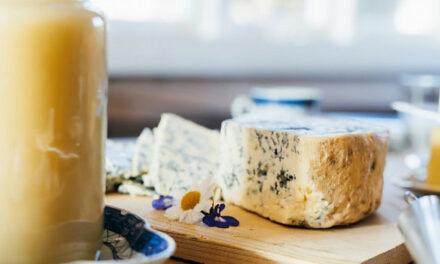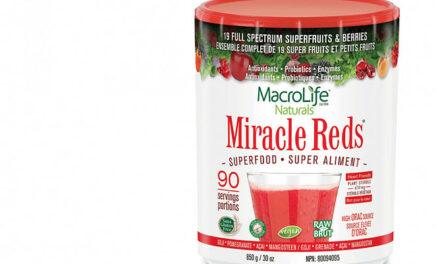Do you know What is the Best Tea for High Blood Pressure? In this guide on tea for hypertension, we will be addressing that question and many other for those who keen to learn more about the best way to go about if you are a tea lover with high blood pressure.
Let’s start rolling…
Tea is the second most consumed and liked to drink in the world apart from water. Tea is noted to be originated from the evergreen shrub (bush) of East Asia, called ‘tea plant’.
It wouldn’t come as a surprise if you ask why teas are the most popular beverages in the world. Well, to start with, apart from the natural rich taste of tea, tea has a lot of health benefits.
I believe most of us do take tea more or less often, either black tea, green tea, Oolong tea, Pu’erh tea or white tea.
This article digs on to all you need to know about tea, hypertension, treatment of hypertension, types of tea, effects of teas on hypertensive patients and the other tea types and their good and bad effects on hypertension.
This article will help you as a patient or healthy individual to stay informed and know the best approach to tea consumption and management of high blood pressure.
What is the Best Tea for High Blood Pressure?
The use of teas for the treatment of high blood pressure is one of the best natural ways of treating such a condition.
You can imagine enjoying the great tastes of natural tea and at the same time managing your blood pressure effectively.
Most research indicates and supports that green tea has stronger antioxidants properties than black tea, but some studies found that both teas exhibit equally effective antioxidant capacities.
Some say patients with high blood pressure always feel like they are a step away from death, but that is not true! Hypertension, like so many other ailments, can be treated and managed, can be supported naturally by the intake of tea from the natural plant “Camellia sinesis“.
Teas are of many types like Green tea, Black tea, Oolong tea, Pu’erh tea and White tea.
All these teas were classified based on the type of leaves picked and the processes or oxidation level.
Surprisingly all these types of teas are extracts of the same basic plant, the “Camellia sinesis” and they are believed to be effective agents in the treatment of high blood pressure.
Black tea and Green tea are recorded as the most consumed and sort after teas in the western world.
NB: No tea has been named or selected as the best for treatment for hypertension, though.
To explain better how tea drinking effects on hypertension better, best to revisit the disease to understand it better.
What is High Blood Pressure?
High blood pressure (hypertension) is also called as ”the silent killer”.
High blood pressure is a situation (medical condition) in which there’s an abnormally high rate of blood flow or pressure against your artery walls. This may eventually lead to serious health problems such as heart problems, kidney problems, stroke etc.
With the increasing rate and number of hypertensive patients in the world, I can say that this ailment is gradually becoming a much larger problem. All Young, middle-age and old fall prey to this deadly ailment hypertension.
Do You Know the Signs and Symptoms of High Blood Pressure?
Good question. High blood pressure is not something that starts overnight; rather it usually develops over time, normally without symptoms or signs.
There are 2 types of hypertension, and these two types are classified based on the factors that cause hypertension.
The first and most frequent high blood pressure type is primary or essential hypertension.
Below is a list of factors that contribute to primary hypertension.
- Eating a diet with high-fat saturation.
- Eating very salty meals (sodium).
- Use of tobacco products.
This is one of the reasons’ why the federal departments of health in almost all countries warn about the bad health risks of smoking by introducing tobacco taxes.
- Old age is also a factor.
Vessels tend to become inelastic as the human body advances.
- Lack of exercise.
- High intake of alcohol
- Other diseases.
For example, diabetes etc.
Tip: If you have diabetes, Glucerna can be of help.
The second type of high blood pressure is called secondary hypertension.
It is mainly influenced by poor health conditions in the body, and other factors like pregnancy.
The health challenges that affect the ‘secondary’ type of hypertension are below.
- Problems or abnormality with the parathyroid gland.
- Tumor in the adrenal or pituitary glands.
- Reactions to medicines or drugs for another medical problem.
High Blood Pressure Treatment and Care
The care and treatment of Hypertension range from maintaining good and healthy lifestyle as directed by the doctor.
But sometimes the healthy lifestyle adjustment might not give the desired health goal for people with high blood pressure. In this case, in addition to that, your doctor may recommend drugs and medications to lower your blood pressure in order to achieve the desired health goal.
Here is the list of anti-hypertensive drugs.
Medications for Treatment of High Blood Pressure
-
Thiazide diuretics
These medications are also known as water pills, they meant to act on the kidneys to help your body remove salt (sodium) and water. In that way, diuretics help to reduce blood volume.
-
Calcium channel blockers
These medications include amlodipine (Norvsasc), iltiazem (Cardizem, Tiazac, etc.). Calcium channel blockers help you to relax the muscles of the blood vessels. This result in a lower heart rate.
-
Angiotensin-converting enzyme (ACE) inhibitors
These drugs help you relax your blood vessels by blocking the creation of chemicals that help the body to narrows blood vessels.
People with chronic kidney disease most likely benefit from Ace inhibitors as one of their key drugs.
-
Vasodilators
These medications work on the muscles on the walls of the arteries, preventing the muscles from tightening and your arteries from narrowing.
-
Central-acting agents
These medications work on the brain by signaling the nervous system to increase the heart rate and to constrict your blood vessels. Examples of central-acting agents include guanfacine (Intuniv, Tenex), clonidine (catapres, Kapvay) and methyldopa.
-
Alpha-blockers
The work of these medications is to reduce the nerve impulses on the blood vessels, blocking the effectiveness of natural chemicals responsible for narrowing blood vessels.
Examples include prazosin (minipress), doxazosin (Cardura) and others.
Tip: Coconut oil, krill oil and garlic can help you manage high blood pressure too.
What are the Healthy Lifestyle Changes for Care of High Blood Pressure?
Below is the key.
- Eat a low-fat diet
- Avoid salty meals
- Regular exercise
- Consider weight loss, if necessary.
- Avoid smoking
- Maintain moderate intake of alcohol.
Tip: Chinen salt would be a better option for diabetics.
Know all that background info about high blood pressure, now let’s turn on to Tea.
What is Tea?
Tea is a beverage produced by boiling young leaves and leaf buds of the plant, Camillia sinensis.
There are 2 main varieties of the tea plants, they are:-
- Small-leaved China plant (C.sinensis), and
- The large-leaved Adam plant (C.sinensis assamica).
Hybrids of these two types are also grown.
All these tea types can be organic or inorganic.
The leaves may be fermented or left unfermented.
What is the History of Tea?
The story of the origin and history of tea is traced back to the evergreen shrub (bush) of East Asia. According to legends, tea has been known and consumed in China since about 2700 BCE.
Tea became a part of China where it served as a medicinal beverage obtained by boiling the fresh leaves in water. As time went on, tea became a daily drink this prompted the cultivation and processing of tea to rise at a very high rate.
The Dutch East India Company carried the first consignment of Chinese tea to Europe in 1610.
Then in 1669, the English East India Company brought China tea from ports in java to London market.
Then by the late 19th and early 20th centuries, tea-growing had extended to Russian Georgia, Sumatra, Iran and then to non-Asian countries.

To the countries such as Sri Lanka, Natal, Malawi, Uganda, Kenya, Congo, Tanzania and Mozambique in Africa, then to Argentina, Brazil, and Peru in South America, and to Queensland in Australia.
What are the Types of Tea?
There are about one thousand five hundred (1500+) or more varieties of tea flavors. These various flavors are extracted from the five main categories of tea.
They are:-
- Black tea
- Green tea
- Oolong tea
- Pu-erh tea
- White tea
Let’s learn more about those specific types of tea.
Black tea
This is the darker and the most widely known and consumed tea. In other words, most of those tea products we consume tend to be extracts of black tea.
The leaves are typically fine-grained and are mostly dark brown or black due to it’s an extended oxidation process.
In China, this is known as Red tea. When milk is added, it has an orange tinge to it.
Green tea
Green tea, unlike black tea and oolong tea, is prepared by steaming and pan-frying the camellia sinensis leaves and drying them after.
Green tea is known for it’s wide range of health benefits, such as:-
- Reduction of a high level of cholesterol
- Reducing fat in the blood.
- Improves mental alertness.
- Lowers high blood pressure.
- Used as an ointment for genital warts.
Oolong tea
This is called “Black dragon” by the Chinese. It falls in between the black and green tea varieties.
Oolong tea is subjected to 80% of the oxidation process and is one of the very few teas that can be brewed numerous times.
It gives a different shade of flavor at each brewing.
White tea
White tea is believed to be one of the most delicate tea varieties, this is because it is minimally processed.
White tea leaves are plucked before they open fully, at this stage the young buds are still covered by fine white hair’s, more reason it was tagged “white tea”.
The minimal processing and low oxidation results to some of the freshest and most delicate teas available.
Pu-erh tea
An earthly blend of the tea with a taste to match. The taste is a desirable one due to the heavy fermentation process.
Note: pu-erh requires boiling for infusion to occur.
How Can Tea Affect High Blood Pressure?
Studies show that the effects of tea on hypertension depends on some factors.
They are:
- Tea type and caffeine content
- Amount of tea taken (dosage)
- The difference in the body system of hypertensive patients.
Those factors listed above tend to determine the effects of tea on hypertension.
Most teas have affected hypertension positively by lowering the blood pressure, but some tea also tends to fuel the rise in blood pressure which is not healthy.
In as much as the majority of the teas help in lowering high blood pressure, examples:
- Green,
- Oolong,
- Hibiscus,
- white and
- chamomile teas.
However, there are also teas that can fuel the increase in blood pressure due to high caffeine content, such as:
- Black and
- pu-erh tea.
Note: all the teas from “camellia sinensis” plant contain caffeine, but the concentrations are different. Herbal teas don’t contain caffeine because they’re not made from camellia sinensis plant.
Tip: This is our guide to the best protein drinks for people with diabetes.
Black Tea vs Green Tea for Hypertension – What is the Difference?
Tea is a beloved rink of people all over the world. While there are many differences between the black and green teas, the key difference between them is that the most popular black tea is ‘oxidized’, but the green tea is ‘non-oxidized’.
During the preparation of black tea, the leaves are left under the air to promote the oxidization process. As a result of the oxidization the leaves turn into dark brown. It also allows the heightening and intensity of the flavors.
In contrast, green tea preparation doesn’t undergo oxidation. This makes the green tea much lighter compared to black tea.
Both green tea and black tea are abundant with antioxidants called polyphenols.
They also contain flavonoids, which are a subgroup of polyphenols.
However, the type and amounts of flavonoids contained in green tea and black tea differ.
Many researchers indicate that green tea has stronger antioxidant properties than black tea, but one study found out that both teas exhibit equal antioxidant capacities.
Both green tea and black tea are also found to help with the reduction of LDL (bad cholesterol) and triglycerides.
Nevertheless, both green tea and black tea comes with Caffeine, a well-known stimulant.
Caffeine stimulates the nervous system, and as a result, blocks the adenosine (inhibitory neurotransmitter) pathway. This means caffeine can boost up your mood, alertness, reaction time and short-term recall capacity.
Note: Green and black tea contain polyphenols that have a potent antioxidant effect, which can potentially reduce the risk of heart diseases. Also, both teas have caffeine, which could result in increased alertness and focus. Released by-product L-theanine can become a stress buster and calm the body.
Chamomile Tea for Hypertension – Is It Recommended?
Chamomile tea is a popular herb beverage which offers a lot of health benefits. Chamomile tea is made from a herb that comes from the Daisy-like flowers of the Asteraceae plant family.
Chamomile tea, just like other teas, has it’s own effects on hypertension. Chamomile flowers contain flavonoids, Sesquiterpenes, and antioxidants. Once dried, Chamomile flowers are used as herbal and natural remedies.
The antioxidants in chamomile tea, like flavonoids, help to lower risk of heart disease. It’s effective in lowering blood pressure and cholesterol too.
Green Tea for Hypertension – Is It Recommended?
Green tea is less popular than black tea; however, it’s medicinal benefits and properties cannot be overlooked.

Green tea is well-known for it’s capability to improve blood flow and also lower cholesterol in the body.
Several studies suggested that the flavonoids and the caffeine in green tea help elevate metabolism, increase fat oxidation and even improve insulin activity.
Study shows that those who consume green tea lose an average of 2.9 pounds during a period of 12-weeks, while maintaining their regular diet.
All these factors show how much role green tea plays in the reduction and care of hypertension.
Oolong Tea for Hypertension – Is It Recommended?
Oolong tea which combines the qualities of dark and green teas offers some interesting health benefits.
A research study done in China reported a 39% lower risk stroke in those that take about 480ml of oolong tea.
In addition, regular consumption of oolong tea per day may reduce the person’s risk of high blood pressure by up to 46%.
It’s important to note that oolong tea does contain caffeine (too), which can raise blood pressure, so it should be taken moderately.
The caffeine content in oolong is just a quarter of that in coffee, so it’s effect on hypertension is likely to be small too.
Remember, drinking above 4 cups of coffee a day could increase your blood pressure.
Tip: Here are the best coffee creamers for diabetics.
White Tea for Hypertension – Is It Recommended?
White tea, compared with other types, is a delicate tea that is still gaining popularity. It has greater antioxidant activity than it’s opponents green and black tea.
White tea also has the least caffeine content, which makes it a smarter choice for tea consumers who would like to limit caffeine intake.
White tea aids weight loss, improvement of liver and kidney health, treatment of cancer, reducing in the inflammation, treating acne etc.
Pu-erh Tea for Hypertension – Is It Recommended?
The caffeine in pu-erh tea could increase the blood pressure of patients with hypertension; however, the effect might be minimal on patients who have been using caffeine regularly.
The caffeine in Pu-erh tea can result in arrhythmia, also known as ‘irregular heartbeats’, in some people.
Pu-erh is not advisable for hypertensive patients and should be taken with caution mostly for those with heart conditions.
What is the Best Type of Tea Which Could Lower Your Blood Pressure?
Green tea, as noted earlier, is loaded with many health benefits, it is widely consumed to support the weight loss process.
Green tea plays a key role in the fight with high blood pressure, so drinking green tea can help the blood flow. It also can reduce inflammation, including inflammations in the heart tissue.
The high content of antioxidants is one of the many reasons green tea is seen as the best.
Note: Apart from green tea which is seen as the best, there are few other teas considered to be as good as the green tea, such as Oolong tea and Hibiscus tea.
Tips for Drinking Tea If You Have Hypertension
Since the majority of the teas consumed tend to be ‘antihypertensive’, there are also teas that can fuel the rise in blood pressure due to their constituent’s and effects on hypertension.

Therefore, here are tips and guides for hypertensive patients on how to enjoy tea, the amount, and the best types of tea for hypertension.
- The medical advice is you to take a cup of green tea in the morning (around 10-11am) or evening.
- Avoid teas with high caffeine content.
- Green tea, Oolong tea, Hibiscus tea are advisable for hypertensive patients.
- Avoid coffees.
- Black and pu-erh tea should be consumed at a minimal rate if you are hypertensive.
- Make sure you see the doctor for regular check-ups and clinical mentorship on the dosage and preferred tea type. This is a must, if you believe, that consuming a cup of tea has an effect on your blood pressure.
Conclusion
In summary, hypertension also is known as “the silent killer” is an ailment whose symptoms are not really recognized because it’s a disease that develops over time. Certain factors like stress, unhealthy diet, high alcohol intake etc can result in this chronic disease.
However, it can be managed by treatment approaches which include, healthy diet, exercise, drugs and remedial products like tea and herbal preparations. Remember to see a doctor for check-ups in order to combat this complex deadly ailment.






good reading